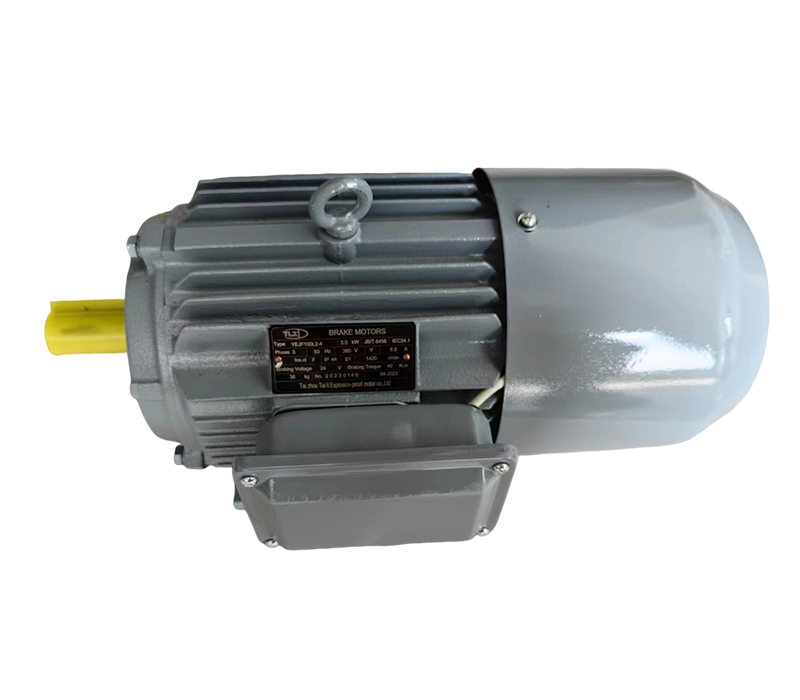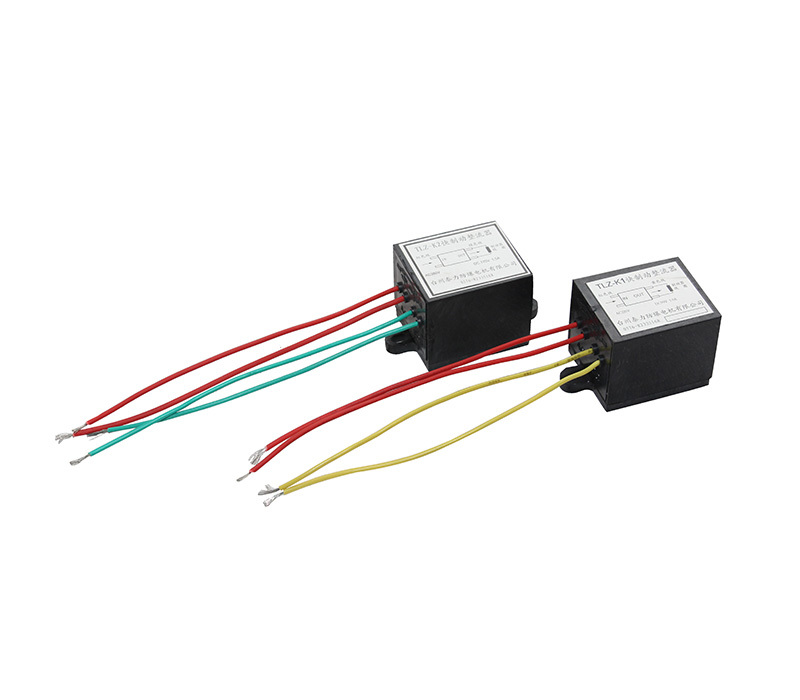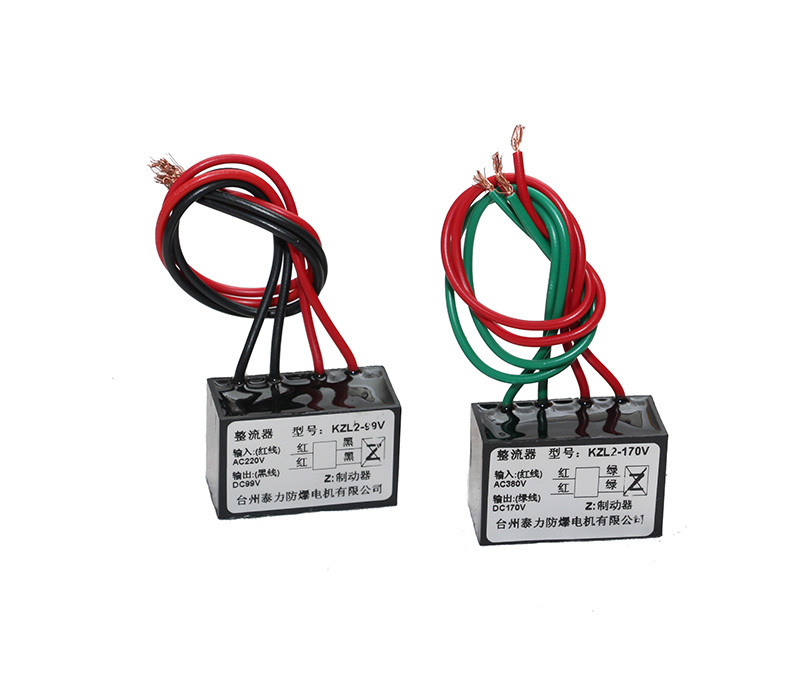YEJF series electromagnetic braking three-phase asynchronous motor
The AC brake has a fast starting response, short braking time, and adjustable reliable braking torque
Product serial number:
Category:
Keyword: YEJF series electromagnetic braking three-phase asynchronous motor
- Product Description
- Technical parameters
- Appearance and installation dimensions
- Wiring method
- Gap and torque adjustment
- Common faults and troubleshooting
- Sample and video download
-
- Commodity name: YEJF series electromagnetic braking three-phase asynchronous motor
Product Introduction
The YEJF series electromagnetic braking three-phase asynchronous motor is a power-on braking motor carefully designed according to the national standard JB/T6465. It consists of a general-purpose (Y2 series) three-phase asynchronous motor with a DZMF series electromagnetic brake added to the rear. Its power rating and mounting dimensions comply with JB/T6456 industry standards and IEC72 international standards.
This series of products has obtained ISO9001 system certification and CCC product certification.
Application
This series of motors is suitable for various transmission machinery and equipment that require special braking functions. Good braking effects can be achieved through automatic control methods. Because the braking motor has no braking torque when idling, it is not suitable for equipment with gravity sag, such as lifting machinery.
Working Principle
The motor part and the brake part of the YEJF braking motor are independently powered. When not powered, the motor shaft is in a freely rotating state. Therefore, when the motor is in operation, it can start directly. When the motor needs to be braked after power failure, the brake will be energized. After the motor achieves the braking effect, the brake is de-energized (achieved through the control circuit), and the motor shaft resumes free rotation.
Product Features
1. The protection level of the motor body is IP44, and the brake part is IP23;
2. The motor cooling method is IC411 (self-ventilated);
3. The motor insulation class is B, F, and the brake insulation class is F;
4. The installation dimensions and power rating of the motor fully comply with JB/T6456 industry standards and IEC-72 international standards;
5. 71 is an aluminum shell motor, 80~160 is an aluminum shell or cast iron shell motor, and 180 is a cast iron shell motor.
Operating Conditions
1. Rated voltage: Standard products are AC380V 50Hz, and the electromagnetic brake is DC24V (or designed according to customer requirements)
2. Operating mode: S1 (continuous operation);
3. Altitude does not exceed 1000m;
4. Ambient temperature: -15℃~40℃;
5. When the average minimum monthly temperature is not higher than 25℃, the average maximum relative humidity in the wettest month is 90%.
-
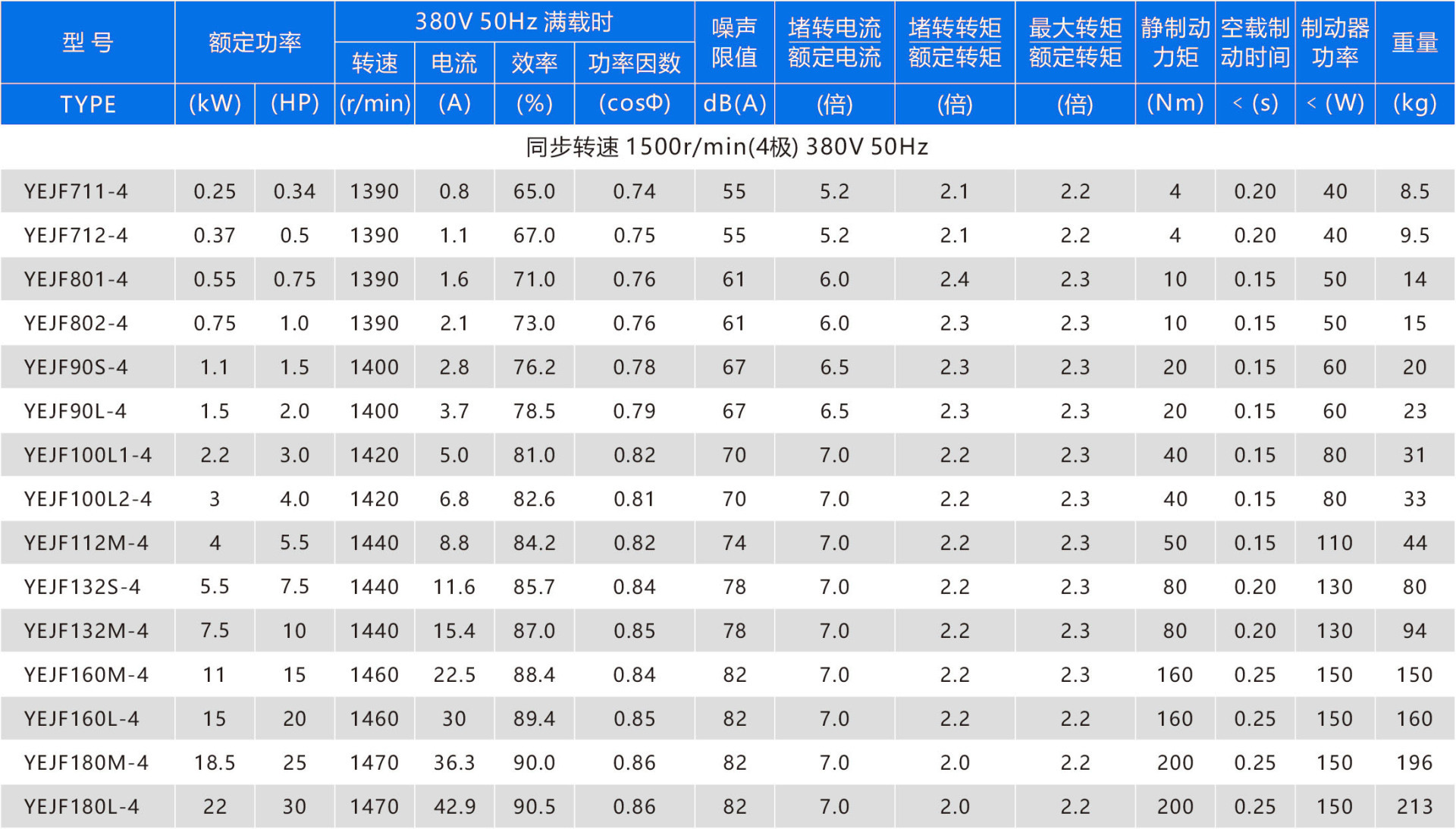

-

Electric motor with B3 type mounting base and feet, and end cap without flange


Electric motor with B5 type mounting base without feet, and end cap with flange (with through hole) R is the distance from the flange mating surface to the shaft shoulder


Electric motor with B14 type mounting base without feet, and end cap with flange (small flange with screw holes) R is the distance from the flange mating surface to the shaft shoulder

-
1. For the motor section, motors with power of 3kW and below use Y connection when leaving the factory, while others use Δ connection;
2. All brakes are powered by an independent DC24V power supply.
-
1. Air gap value (δ) of the brake equipped in each motor specification of this series

2. Inspection of the air gap
As shown in Figure 1, the movable distance between electromagnet 1 and friction plate 2 is called the air gap (δ). The normal operating air gap (δ) does not exceed the specified air gap value. When the motor leaves the factory, it is adjusted within the initial operating air gap range. After a period of operation, due to friction plate wear, the air gap value will increase, which will affect the normal engagement and braking effect of the brake. Therefore, after the motor has been used for a period, select a feeler gauge size according to the large air gap value to check the size of the air gap (δ). During inspection, you can directly insert the selected feeler gauge into the air gap (δ). If it can be inserted, it means the air gap (δ) is too large and needs to be adjusted.
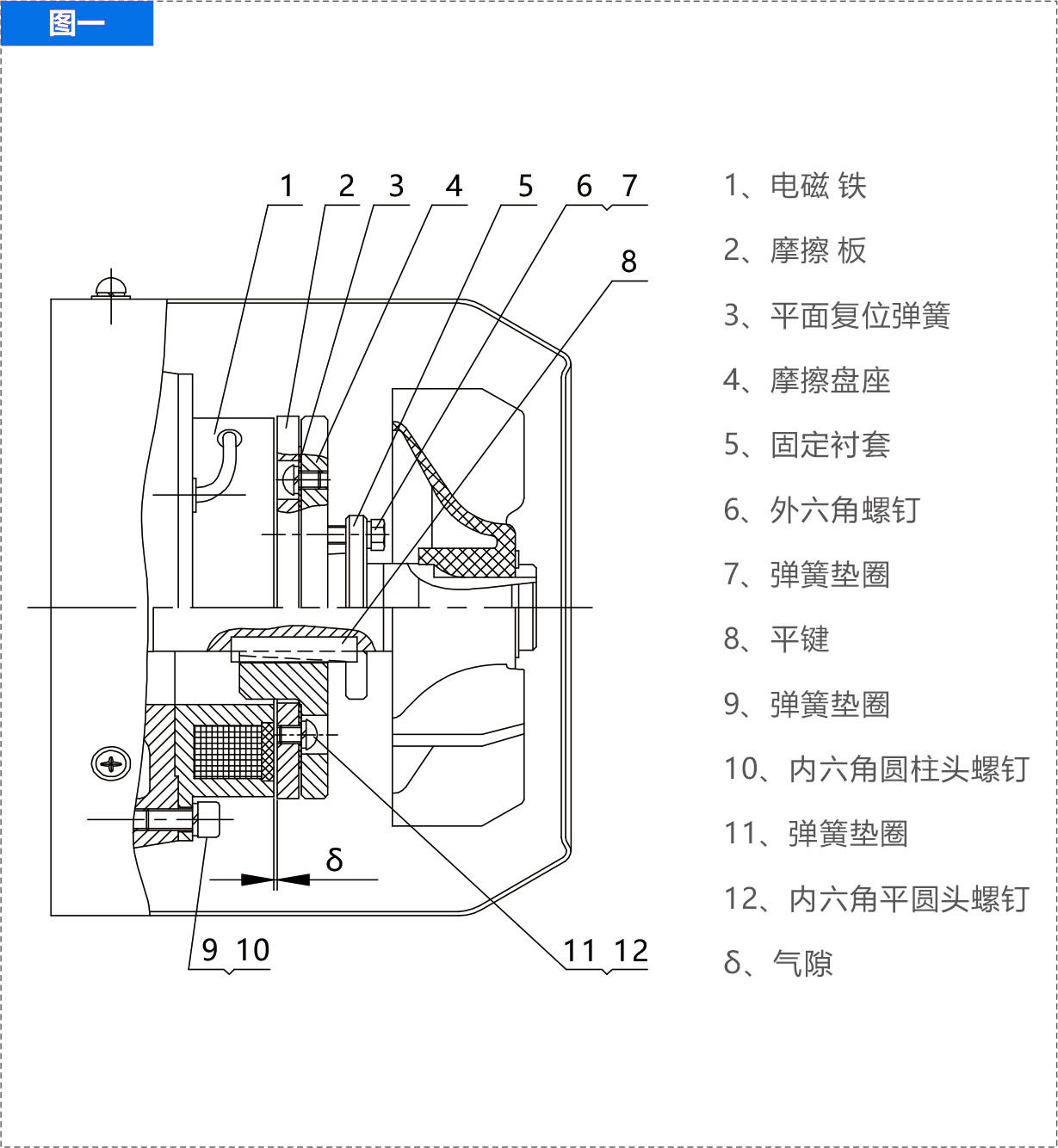
3. Adjustment of the air gap
As shown in Figure 1, withdraw the external hexagon screws 6 (three for DZMF05~20, four for DZMF40 and above). Screw two external hexagon screws 6 into the disassembly process screw holes of the fixed bush 5 to push out the fixed bush 5, and then the assembly of the friction plate and friction disc seat will also loosen. Select three feeler gauges according to the initial operating air gap value, insert them into the air gap (δ) marked in the figure, with the three feeler gauges evenly distributed at 120°. Use a wooden mallet to tap the fixed bush 5 towards the shaft extension direction. Through the tapered inner hole fit between the fixed bush 5 and the friction disc seat, fix the friction disc assembly, and then tighten the external hexagon screws 6. When tightened, the friction disc assembly will move outwards, and the feeler gauges will loosen and can be pulled out. Note that when tapping the fixed bush 5 with the mallet, it must be tapped tightly, otherwise, when the external hexagon screws 6 are fixed, if the friction disc assembly moves too much outwards, the air gap (δ) will become larger. Therefore, we need to coordinate the selection of feeler gauges and the adjustment method well. If there is no standard feeler gauge for air gap adjustment, similar thickness iron sheets can be used as substitutes.
-
Serial Number Fault Phenomenon Inspection Location and Method Troubleshooting Measures 1 Brake does not engage (1) Use a multimeter to measure the resistance of the excitation coil to check for disconnections.
(2) Check if the DC input power supply to the brake is normal.
(3) Check if the brake lead connections are loose.(1) Repair or replace the yoke if there is a disconnection.
(2) If abnormal, repair and input according to the nameplate requirements.
(3) Retighten.2 Braking is ineffective or unreliable (1) Friction pad wear, increased working air gap, and reduced torque.
(2) Friction pad damage.
(3) Load inertia is too large, exceeding the braking torque.(1) Readjust the air gap.
(2) Replace with new parts.
(3) Re-select the motor model.3 Motor overheating (1) Overload exceeding the nameplate current rating.
(2) Using a variable frequency drive power supply, prolonged use at low frequency.
(3) Check if the motor air intake and fan blades are blocked by lint, yarn, paper scraps, etc., blocking the cooling airflow.
(4) Check the power supply and motor for phase loss.(1) Reduce the load to within the nameplate current rating, or reconsider the motor selection.
(2) Install an additional fan.
(3) Clean lint and other debris from the motor air intake and fan blades.
(4) Repair. -
File Name Size Upload Date Details YEJF series electromagnetic braking three-phase asynchronous motor 812KB 2021/3/10 Click to download Operation video 100M 2021/3/10 Click to download
Related Products
Message
If you have any questions, please contact us!

